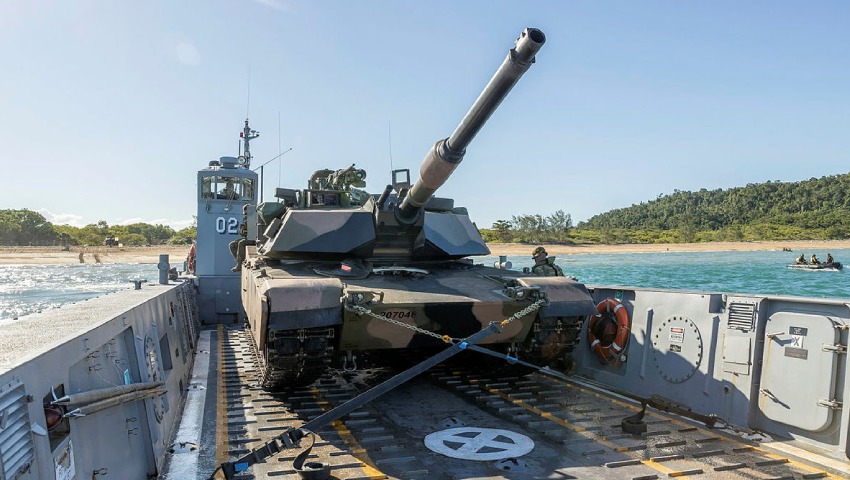Defence recently made the decision to upgrade its existing fleet of Abrams tanks, but should the Commonwealth have considered alternatives?
Last month, the US Defense Security Cooperation Agency (DSCA) approved a US$1.7 billion ($2.2 billion) Commonwealth government request to purchase M1A1 Tank structures/hulls provided from stock for the production of:
- 75 M1A2 SEPv3 Abrams Main Battle Tanks;
- 29 M1150 Assault Breacher Vehicles;
- 18 M1074 Joint Assault Bridges;
- six M88A2 Hercules Combat Recovery Vehicles; and
- 122 AGT1500 gas turbine engines.
The M1A2 SEPv3 Main Battle Tanks will upgrade the existing fleet, with no changes to Royal Australian Armoured Corps force structure.
However, the purchase has been scrutinised by observers, who have questioned the combat application of heavy armoured vehicles in the Australian context, with the Army last deploying tanks in the Vietnam War.
Declan Sullivan, post-graduate in strategic studies from the Strategic and Defence Studies Centre at the Australian National University, weighs in on the debate in a piece published by the Australian Strategic Policy Institute (ASPI).
Sullivan notes the challenges associated with deploying the heavier SEPv3 variant of the Abrams tank, particularly in amphibious warfare operations.
“They’re too heavy for our amphibious landing boats and for many of the underdeveloped or degraded roads and bridges in our near region, as well as in large parts of northern Australia,” he writes.
He acknowledges that such platforms play a critical role in supporting infantry, referencing remarks made by retired Major General and Liberal senator Jim Molan, who criticised Australia’s decision not to deploy the tanks in Afghanistan.
However, Sullivan argues that tanks have been stuck in a wider “holding pattern” ahead of the development of next-generation platforms.
“The M1A2 SEPv3 is just the latest in a line of life-extension upgrades for the M1 Abrams platform, which is expected to be in service in the US until at least 2030, with further upgrades planned,” he writes.
Other countries, Sullivan observes, have taken “half-steps” in pursuit of stop-gap solutions.
“The French and Germans are in the early stages of development of a ‘main ground combat system’ to replace their respective Leclerc and Leopard 2 platforms by 2040. It so far appears to be a consolidation of current capabilities but may have an unmanned component,” he continues.
“The British have just announced that they’re upgrading their Challenger 2 tanks to ‘Challenger 3’ status, with improved targeting and data systems, and a NATO-standard smooth-bore cannon, but this will just be a conversion of existing tanks, rather than the development of a new platform.
“Australia’s purchase of upgraded models fits this trend as militaries await development of new technologies and assess the new tactical environment tanks will operate in.”
According to Sullivan, a key component of future heavy armoured platforms would be unmanned capability, pointing to Russia’s reported development of an unmanned version of its T-14 Armata tank and the UK’s facilitation of such technology in its Challenger 3 upgrade.
“Crucially for Australia’s tank purchase, the M1A2 SEPv3 doesn’t have an unmanned capability,” Sullivan adds.
Sullivan continues: “Future tank platforms may be split between different units, with a manned control unit accompanied by unmanned ‘loyal tankmen’ providing most, if not all, of the firepower.
“Such platforms have barely entered the concept phase and do little to solve the current challenge of how to deploy today’s heavy tanks.”
The analyst believes that Australia’s latest tank upgrades, initially scheduled to operate until 2035, could likely extend the platform’s operating life to at least the 2040s.
Despite acknowledging that the tanks should continue to be operated by the Australian Army, Sullivan claims that Defence has “missed an opportunity” to consider lighter alternatives, including tapping into the US Army’s light tank ‘mobile protected firepower’ program, set to deploy its first units by 2025.
“The M1A2 SEPv3 is a continuation of the Army’s tank capabilities: fast, powerful, reliable and overkill and overweight for Australia’s needs, with little room to manoeuvre for future developments,” he adds.
“Australia isn’t alone maintaining the status quo with its tanks until new technologies and doctrines emerge, but in the complex and challenging new international security environment Australia faces we must be doing more than just treading water.”
Get involved with the discussion and let us know your thoughts on Australia's future role and position in the Indo-Pacific region and what you would like to see from Australia's political leaders in terms of partisan and bipartisan agenda setting in the comments section below, or get in touch with



